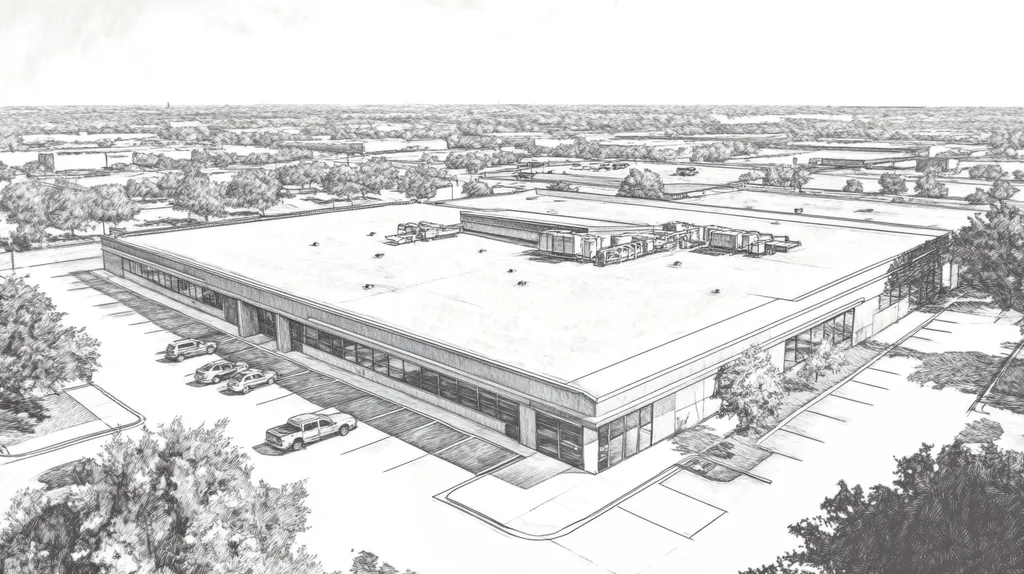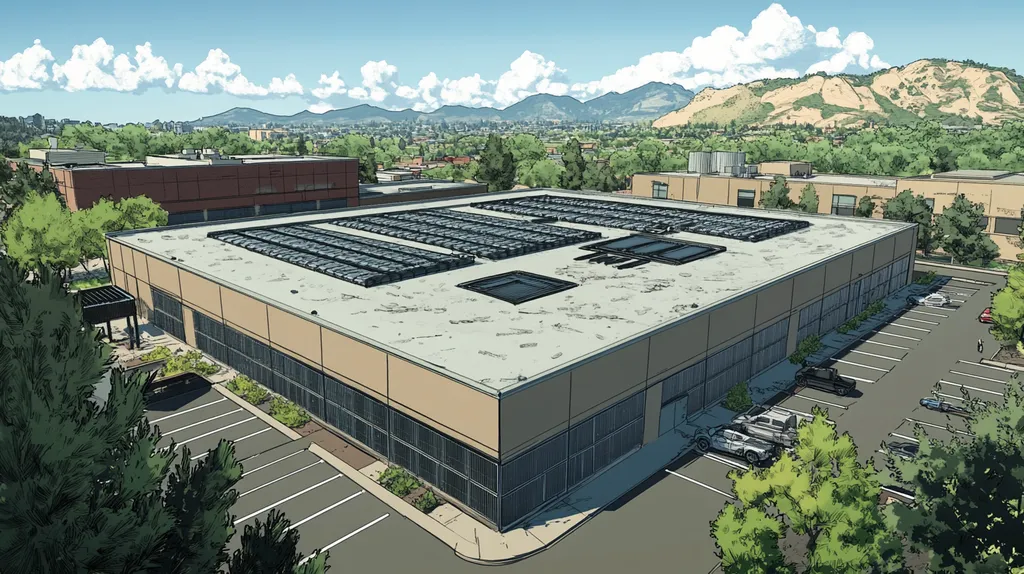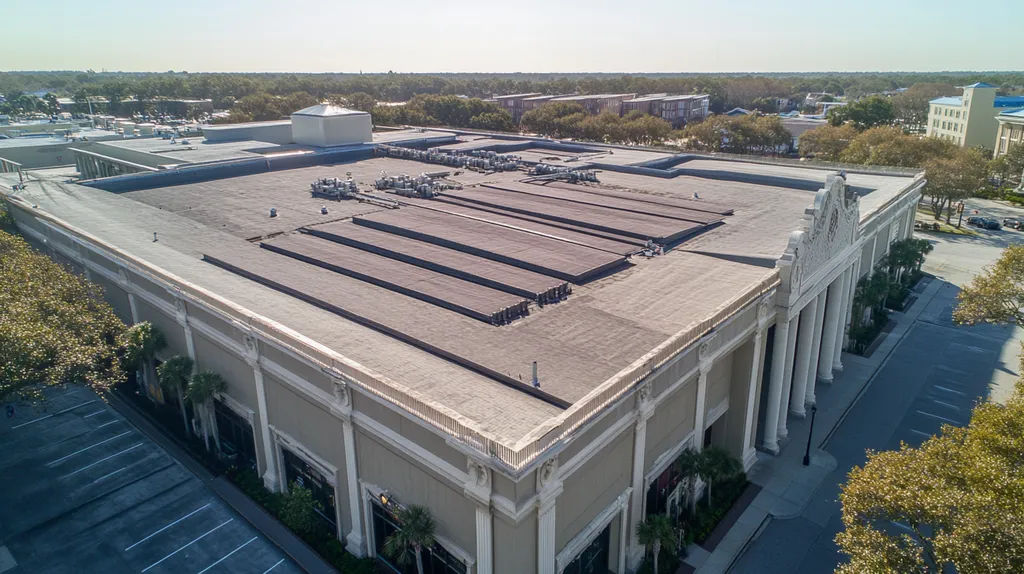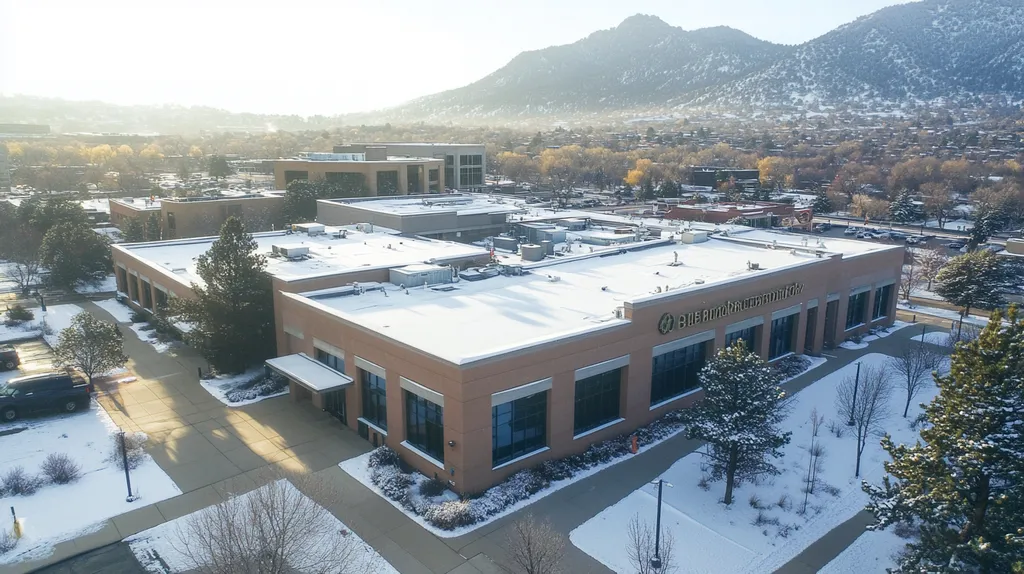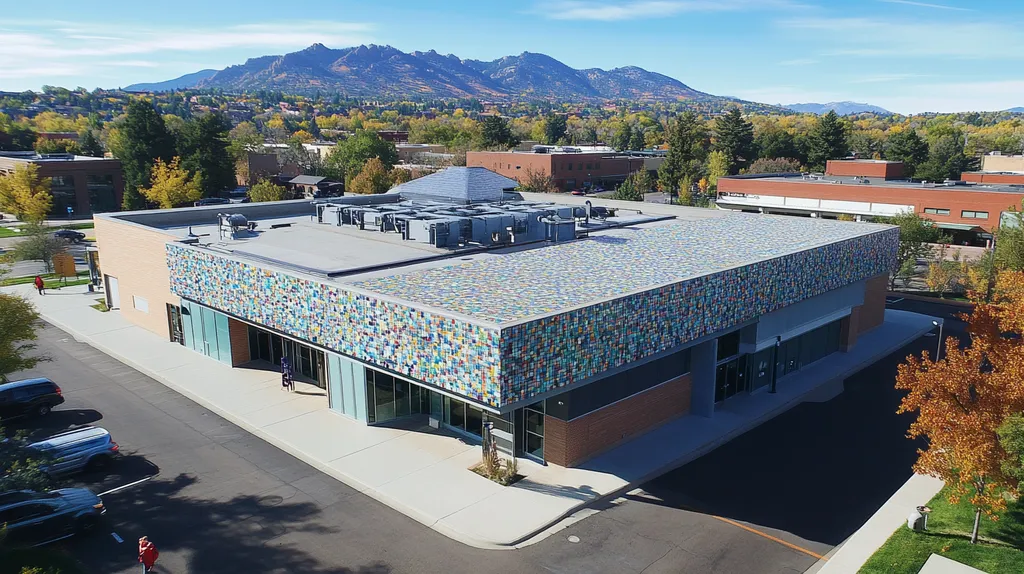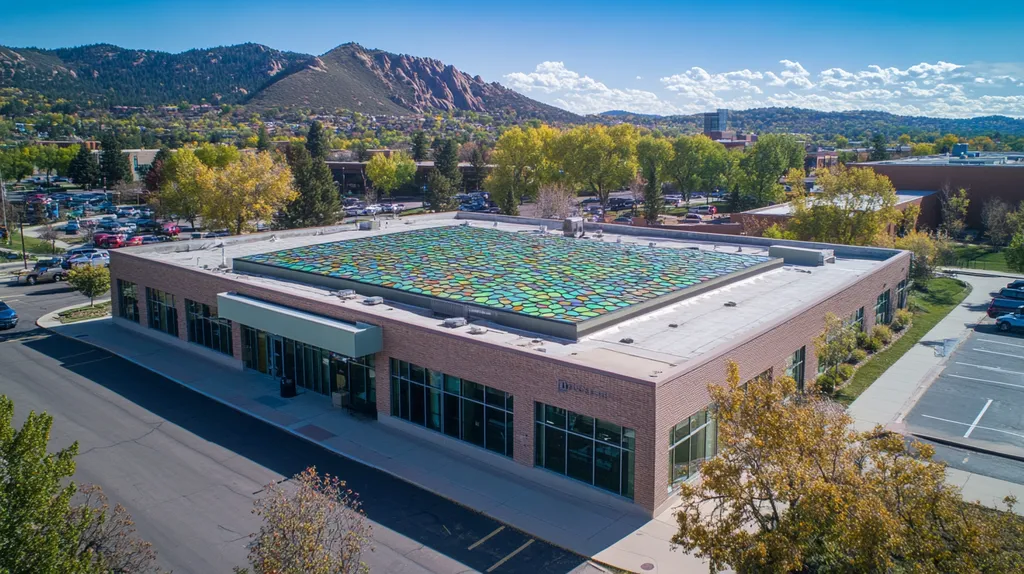Commercial roofing systems face an escalating threat from pest infestations, with industry studies showing a 40% increase in pest-related roof failures over the past decade. These incidents cost property owners millions annually in structural repairs and decreased energy efficiency.
From rodents that compromise insulation to birds that block drainage systems, pest damage can rapidly accelerate roof deterioration and create significant liability risks.
This comprehensive guide provides property professionals with actionable strategies for enhancing roof pest resistance through structural improvements, maintenance protocols, and compliance measures.
SECTION 1: PERFORMANCE FACTORS
With rising pest populations, the threat to commercial roofing systems is more urgent than ever. Property owners and facility managers must focus on pest resistance to prevent costly damages and extend the life of their roofs. Studies reveal that about 40% of roofing failures can be traced back to pest-related issues, highlighting the critical nature of proactive strategies. This section discusses key performance factors that influence a roof’s susceptibility to pests and provides actionable insights to bolster resistance.
Identifying Structural Vulnerabilities for Pest Entry
Recognizing potential entry points for pests is vital to effective management. Small gaps, cracks, and holes can become gateways for rodents and insects. Routine inspections should concentrate on these vulnerabilities, especially near rooftop equipment, vents, and drainage systems.
Regular maintenance activities, such as sealing cracks and installing barriers, can dramatically lower these risks. For instance, keeping the roof perimeter secure helps block access from common nuisances like birds and rodents. Property managers should also consider surrounding trees or vegetation that may act as bridges for pests.
Training staff to report pest sightings or irregular roof debris can be a game-changer. Early detection can curtail problems before they evolve into more significant infestations. By consistently identifying and addressing vulnerabilities, management can significantly diminish pest-related damage.
Key Action Items
Evaluating Roof Material Durability Against Pests
Not all roofing materials provide the same level of resistance to pests. Selecting durable materials can lead to significant savings in repair and maintenance costs. Certain options, such as metal and modified bitumen, are far more effective at deterring pests than others.
For example, metal roofs are less vulnerable to damage from termites and rodents due to their sturdy composition, while organic materials can create inviting habitats for pests. Evaluating material options is crucial for making long-term decisions that protect property investments.
Additionally, installing protective coatings can add extra layers of defense against pest damage, preventing penetration and providing an additional barrier. Property owners should collaborate with roofing experts to determine material choices best suited to their specific environments.
Key Action Items
Inspecting Roof Penetrations and Flashing Integrity
Roof penetrations and flashing are critical areas for potential pest entry, making their routine inspection essential. If these components are improperly sealed or damaged, the chances of pest intrusion significantly increase. Scheduled inspections are crucial for identifying and remedying such issues before they escalate.
Special attention should be given to flashing conditions around vents, chimneys, and drains. Poor installation or deterioration can create gaps that pests easily exploit. Simple visual checks can highlight obvious flaws, but techniques like moisture scanning may be necessary for thorough evaluations.
Utilizing caulking and weatherproofing materials enhances the integrity of flashing. Regular maintenance that includes resealing and aligning roof penetrations can further bolster pest resistance while also preventing water buildup and mold growth that attract unwanted guests.
Key Action Items
SECTION 2: FINANCIAL CONSIDERATIONS
Investing in pest-resistant roofing solutions is not just a precaution; it’s a strategic financial decision. Ignoring pest threats can lead to severe structural damage, costly repairs, and a decline in revenue. A proactive approach safeguards the roof while yielding significant savings on long-term maintenance costs. Property owners and facility managers must grasp the financial implications of their roofing choices to make smart, informed decisions.
Cost Assessment of Pest-Resistant Roofing Upgrades
While the upfront cost of pest-resistant roofing materials may seem high, the long-term savings can be substantial. Investing in durable materials like modified bitumen or TPO with built-in pest deterrents can effectively fend off infestations, lowering future repair expenses. These upgrades can save property owners thousands over the years by minimizing maintenance needs.
Consider the longevity and performance of these materials. High-quality membranes that resist pest penetration not only ensure fewer repairs but often come with extended warranties, further enhancing their value. Additionally, pest-resistant roofs can potentially lower property insurance premiums, as they decrease the risk of pest-related damage claims.
It’s crucial to conduct a thorough cost comparison between standard roofing systems and those specifically designed for pest resistance. Such analyses highlight the financial advantages of investing in robust, preventive roofing solutions.
Key Action Items
Budgeting for Routine Pest Inspection and Maintenance
Creating a dedicated budget for regular pest inspections is essential to safeguarding roofing investments. Pest-related issues can arise unexpectedly, but consistent inspections help mitigate damages and disruptions. Allocating specific funds for these inspections ensures resources are always available when needed.
Routine inspections not only identify existing pest issues but also help prevent future infestations. For instance, regular evaluations can identify potential access points for pests, prompting timely interventions. Property owners should include the cost of professional pest management services in their annual budget.
Equipping facility staff to recognize early warning signs of pest activity fosters a proactive culture regarding roof maintenance. This approach can significantly decrease inspection costs by leveraging internal resources. Implementing a comprehensive maintenance plan that includes pest-proofing measures will prolong the roof’s lifespan, making this budget an investment rather than an expense.
Key Action Items
Evaluating ROI of Integrated Pest Control Measures
Assessing the return on investment (ROI) for integrated pest control measures necessitates a clear understanding of associated costs and potential savings. Effective pest management can reduce inspection and repair frequency, translating to significant long-term savings. A cost-benefit analysis should consider both direct and indirect financial benefits linked to pest management strategies.
Integrated pest management approaches—such as biological controls and physical barriers—may entail initial costs, but they can lower overall pest control expenses over time. These sustainable methods also align with environmental goals that may be attractive to tenants and stakeholders.
By tracking pest incidents over time, property managers can illustrate the effectiveness of these strategies, informing future budget allocations. Ultimately, a balanced financial strategy should focus not only on pest control costs but also on the added value in operational efficiency, tenant satisfaction, and asset protection. Prioritizing pest resistance in roofing decisions is a financially savvy move for any commercial property.
Key Action Items
SECTION 3: COMPLIANCE REQUIREMENTS
Compliance with building codes and regulations is essential for enhancing pest resistance in commercial roofing. Neglecting these requirements can lead to hefty fines, a rise in pest problems, and jeopardized safety for occupants. For instance, not implementing mandated pest barriers may result in significant structural damage and health hazards. Property professionals must navigate the compliance landscape carefully to protect their investments and ensure the well-being of everyone in the building.
Understanding Building Codes Related to Pest Barriers
Building codes outline the fundamental requirements for pest barriers in commercial roofing systems. These regulations often specify the materials and techniques needed to effectively keep pests at bay. Non-compliance risks structural damage and an uptick in pest activity.
Codes may mandate the installation of physical barriers, such as metal flashing or treated wood, to deter rodents and other critters. Staying informed about regional codes is crucial for property owners and managers to ensure compliance and uphold safety.
For new constructions and renovations, integrating these pest barrier requirements from the start can save significant costs linked to retrofitting or fixing compromised roofs. Regular reviews of local building codes can provide valuable guidance, as many municipalities offer resources to assist property managers.
Key Action Items
Fire and Safety Regulations Impacting Pest Control Installations
Fire safety regulations closely intersect with pest control installations, creating vital compliance requirements. For instance, fire codes may dictate how and where pest control products should be applied on commercial roofs to avoid hazards.
Improperly installed pest control measures can pose fire risks—especially if they involve flammable substances. Choosing pest control solutions that adhere to fire safety standards is crucial for maintaining occupant safety.
Property managers must also verify that subcontractors possess the necessary certifications in pest control and fire safety. Regular training for in-house teams on fire safety related to pest control can further mitigate risks. This ensures everyone is aware of and adheres to pertinent regulations.
Key Action Items
Documenting Pest Control for Regulatory Inspections
Thorough documentation of pest control measures is vital for passing regulatory inspections successfully. Inspectors often require detailed records showing the methods and products used to manage pests on the property.
Property managers should maintain a well-organized and accessible filing system for pest control documentation, including contracts with service providers, treatment logs, and inspection reports. Effective recordkeeping not only aids compliance but enhances transparency when pest-related issues arise.
Additionally, conducting regular audits of pest management practices highlights areas that may need improvement. Consistency in documentation underscores a property’s commitment to pest resistance and regulatory adherence.
Key Action Items
SECTION 4: RISK MANAGEMENT
Pest infestations can pose serious threats to the integrity and longevity of commercial roofs. Alarmingly, pest-related damage is responsible for up to 30% of roofing failures. This emphasizes the necessity for property professionals to proactively assess and mitigate these risks. By addressing pest issues early, they protect not just the roof but also the overall value of the building and the safety of its occupants. This section covers how to assess pest risks, implement preventive measures, and develop effective emergency response plans.
Assessing Pest Infestation Risks and Impact on Roof Performance
Understanding potential pest infestation risks starts with a comprehensive risk assessment. Factors like roof design, geographic location, and surrounding vegetation all play a role in pest attraction. For example, flat roofs can provide a haven for pests, especially when debris builds up.
Conducting routine inspections allows property professionals to detect vulnerabilities before they escalate into major problems. It’s crucial to look for signs of existing infestations, such as droppings or nests, and identify conditions that attract pests, like pooling water or unattended food sources.
Pest infestations can have various detrimental effects on roof performance. Insects might damage roofing materials, causing leaks, while larger pests such as rodents may chew through insulation or wiring. These issues can result in higher repair costs and reduced energy efficiency.
Key Action Items
Implementing Preventative Measures and Monitoring Protocols
Preventive measures are vital for keeping roofs free from pests. Start by maintaining the roofing system with regular cleaning to eliminate debris and ensure drainage is working efficiently. This proactive approach deters pests that thrive in stagnant water or accumulated organic matter.
Installing physical barriers, like mesh screens over vents and sealing gaps, also helps keep pests out. These measures can significantly minimize the chances of infestations and the associated damage.
Establishing monitoring protocols is crucial for tracking potential pest issues. This may include placing traps and doing routine inspections to catch early signs of infestations. Such systems ultimately save time and money in the long run.
Key Action Items
Developing Emergency Response Plans for Pest-Related Damage
Despite best efforts in prevention, pest issues can still occur. Therefore, having an emergency response plan for pest-related damage is crucial. This plan should outline immediate actions to take upon detecting an infestation, such as notifying pest control experts.
Identifying and training key personnel to address pest emergencies ensures that the response is timely and effective. Regular drills and reviews keep all staff prepared and informed about the best practices for dealing with infestations.
Additionally, establishing contingency plans, such as relocating tenants if necessary, protects occupants and ensures business continuity. A clear communication protocol helps ensure that all stakeholders remain informed and involved during the response process.
Key Action Items
SECTION 5: OPERATIONAL PROCEDURES
Establishing effective operational procedures is essential to protect commercial roofs from pest infestations. A staggering 20% of commercial roofs encounter pest-related issues each year, resulting in significant damage and costly repairs. By prioritizing inspections, sealing vulnerabilities, and training staff, property managers can take proactive measures against these risks. Implementing structured operational procedures not only enhances pest resistance but also extends the longevity of the roofing system.
Routine Roof Inspection and Pest Detection Checklists
Regular roof inspections are the first line of defense against pest invasions. Conducting these inspections with a comprehensive checklist ensures potential entry points are identified early. Checklists should focus on drainage systems, seams, flashings, and the integrity of the roofing membrane.
Inspectors should consistently look for signs of pest activity, like droppings or nests, which could signal a developing infestation. Documenting these inspections not only tracks changes over time but also informs future maintenance actions. Utilizing digital checklists can enhance accuracy in reporting.
To maximize effectiveness, inspections should occur seasonally and following severe weather events. This allows for timely intervention to address any identified threats before they escalate. Following up promptly on inspection findings is crucial for sustaining roof integrity and pest resistance.
Key Action Items
Sealing and Repair Protocols for Pest Entry Points
Establishing sealing and repair protocols is critical for maintaining pest resistance in roofs. Any cracks, gaps, or punctures create easy access points for pests. Regularly scheduled maintenance should focus on sealing these vulnerabilities with high-quality, durable materials.
Key areas to inspect include roof seams, HVAC penetrations, and drainage outlets. These areas must be monitored closely, and repairs should be made immediately if wear is detected. Quick repairs not only eliminate potential nesting areas but also reduce pest access.
Choosing the right sealing products is essential in enhancing protection against infestations. Property teams should adhere to detailed guidelines to ensure thorough sealing. Promoting a proactive maintenance culture through regular training ensures that staff are aware of their role in pest prevention.
Key Action Items
Coordinating Maintenance Staff Training on Pest Awareness
Training maintenance staff on pest awareness is fundamental to effective operational procedures. Ensuring that personnel understand how to identify warning signs of infestations enables quicker preventive actions. Regular training sessions should be organized to keep staff informed on pest-related topics.
Training should cover commonly encountered pests, their potential impacts, and identification techniques. Materials should also include safe removal methods and best practices for prevention. This empowers staff to actively contribute to pest management efforts.
Encouraging communication among personnel about pest sightings fosters a culture of awareness. Quick reporting of issues by maintenance crews can significantly reduce the risk of unchecked infestations. Establishing clear communication channels emphasizes responsibility and promotes proactive habits.
Key Action Items
SECTION 5: OPERATIONAL PROCEDURES
Effective operational procedures are essential for protecting commercial roofs from pest infestations. Alarmingly, 20% of commercial roofs face pest issues annually, leading to expensive damage and repairs. A proactive approach—focused on inspections, sealing vulnerabilities, and staff training—is key to mitigating these risks. By implementing structured operational procedures, property managers not only bolster pest resistance but also extend the lifespan of their roofing systems.
Routine Roof Inspection and Pest Detection Checklists
Regular roof inspections serve as the first line of defense against pest infestations. Scheduled inspections that employ a detailed checklist will help identify potential entry points before they become problematic. These checklists should assess drainage systems, seams, flashings, and the overall condition of the roofing membrane.
Inspectors need to watch for signs of pest activity, including droppings or nests, which indicate an existing issue. Documenting these inspections allows tracking of changes over time and informs future maintenance strategies. Utilizing digital checklists can enhance accuracy in reporting.
To maximize effectiveness, inspections should occur seasonally and after severe weather events. This frequency ensures that potential threats are addressed quickly before they escalate. Following up promptly on findings from inspections is crucial for maintaining pest-resistant roofs.
Key Action Items
Sealing and Repair Protocols for Pest Entry Points
Implementing sealing and repair protocols is critical for maintaining robust pest resistance in commercial roofing. Any cracks, gaps, or punctures serve as easy entry points for pests. Maintenance schedules should prioritize sealing these vulnerabilities with high-quality materials designed for durability.
Common areas of concern include roof seams, HVAC penetrations, and drainage outlets. These spots require close inspection and immediate repair if signs of deterioration are noted. Timely repairs can eliminate potential nesting sites and hinder pest access.
Utilizing sealing products specifically designed for roofs enhances protection against infestations. It is imperative to select durable and weather-resistant materials. Following detailed guidelines will ensure thorough and effective sealing practices.
Key Action Items
Coordinating Maintenance Staff Training on Pest Awareness
Training maintenance staff on pest awareness is a vital aspect of operational procedures. Ensuring personnel can recognize warning signs of infestations allows for quick preventive measures. Regular training sessions should familiarize the team with pest-related topics to keep them informed and prepared.
Training should include information on common pests in commercial environments and their potential impacts. Educational materials should cover identification techniques, safe removal practices, and best prevention methods. This equips staff to participate actively in pest management efforts.
Fostering communication about pest sightings encourages prompt reporting, reducing the risk of unchecked infestations. Establishing clear communication channels builds a culture of responsibility and awareness among team members.
Investing in ongoing training reflects a commitment to maintaining a pest-resistant environment, ultimately leading to lower repair costs and a longer roof lifespan.
Key Action Items
The Bottom Line
With pest-related roofing failures increasing by 40% over the past decade, commercial property owners can no longer afford to treat pest resistance as optional.
The financial impact of pest damage now exceeds $2 billion annually across commercial properties in North America alone.
Success requires a comprehensive approach that integrates structural improvements, maintenance protocols, and staff training while adhering to regulatory requirements.
Property professionals who implement the strategies outlined in this guide position themselves to dramatically reduce pest-related risks while extending roof lifespans by 5-10 years on average.
The time to act is now – every month of delay increases the likelihood of costly infestations that can compromise building integrity and tenant safety.
FREQUENTLY ASKED QUESTIONS
Q. How can I identify vulnerabilities in my commercial roof?
A. Conduct routine inspections to check for gaps, cracks, and holes that invite pests. Pay close attention to areas around rooftop equipment and drainage systems, as these are common entry points. Regular assessments can significantly reduce pest-related damage and enhance roof longevity.
Q. What should I consider when upgrading to a pest-resistant roof?
A. Consider the upfront costs versus long-term savings on maintenance and repairs. Pest-resistant materials like modified bitumen are effective and often come with extended warranties, adding value. Consult with roofing experts to ensure you choose the best material for your specific environment.
Q. What are building code requirements for my industrial roof?
A. Building codes often require specific pest barrier installations like metal flashing. It’s crucial to stay updated on local regulations to avoid penalties and safety risks. Regularly reviewing these codes will guide you in implementing necessary compliance measures effectively.
Q. How often should I inspect my roof for pests?
A. You should conduct roof inspections at least twice a year and after severe weather events. Monthly visual checks can also help spot early signs of infestation. Regular assessments help maintain roof integrity and prevent costly repair issues.
Q. What preventive measures can I take for my commercial roof?
A. Regularly clean the roof to remove debris and ensure proper drainage. Install physical barriers like mesh screens over vents and seal any gaps or cracks. These proactive steps can significantly enhance your roof’s resistance against pests.
Q. How do I train my staff regarding pest management?
A. Schedule regular training sessions covering pest identification, prevention methods, and safe removal techniques. Encourage open communication about sightings among staff to address potential issues quickly. This creates a proactive culture around pest management in your facility.
Q. What should be included in a roof pest emergency plan?
A. Your emergency plan should outline immediate actions when pests are detected, including notifying pest control professionals. Designate key personnel for response efforts and establish a communication protocol to keep all stakeholders informed during an incident.

